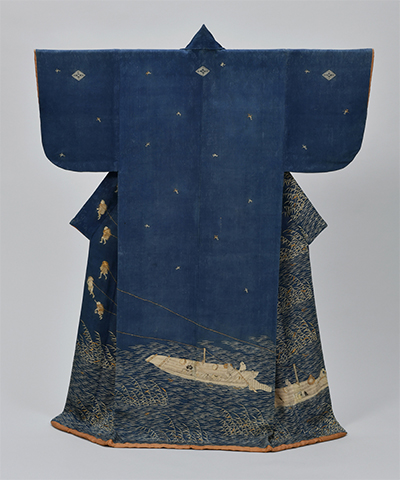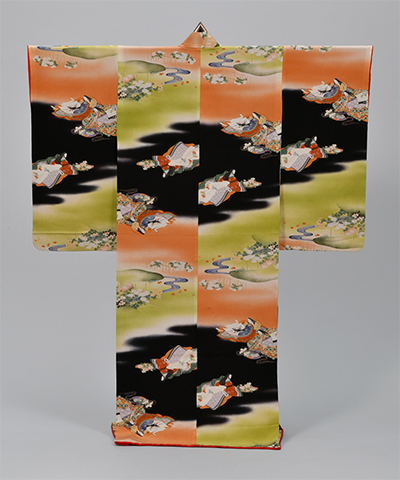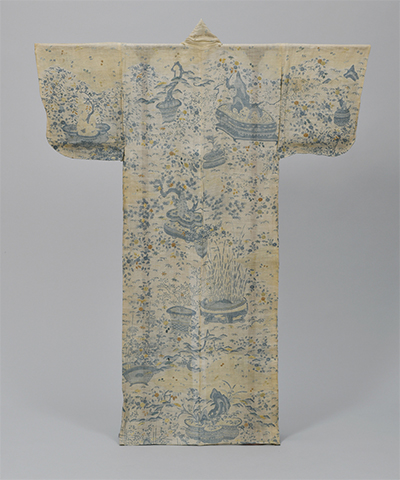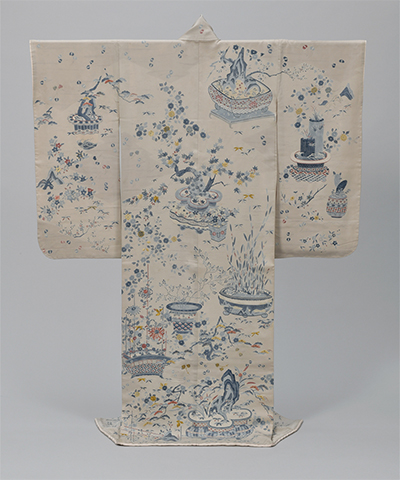
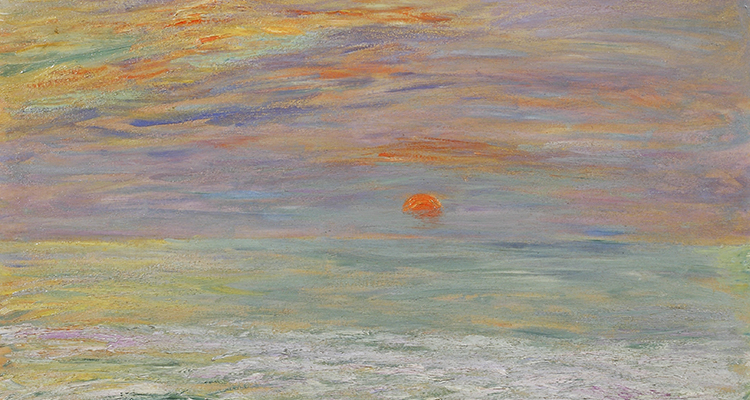
Exhibition
Marubeni Gallery Opening Exhibition II
Pursuing and Passing Down the Beauty - Kimono of the Marubeni Collection
Dates : June 7 (Tue.) - August 1 (Mon.), 2022
Part I: June 7 (Tue.) - July 2 (Sat.), 2022
Part II: July 4 (Mon.) - August 1 (Mon.), 2022
Closed: Sundays, Public Holidays, and other days when Marubeni Building closed.[Repeat Discount] Reduction (200 yen off) applies to visitors who present the ticket stub of a concurrent exhibition.
Kimono Exhibition and Sales meeting will be held by Kimono Manufacturing and Sales Company the Kyoto Marubeni Co., Ltd. on the following schedule. If you are interested, please come by all means.
June 16(Thu.) - June 18(Sat.), 2022 /July 28(Thu.) - July 30(Sat.), 2022
At Marubeni Hall on the 3rd floor of Marubeni Building
For more information, please visit the Kyoto Marubeni Co., Ltd. website.

About this Exhibition
We are pleased to present the second Opening Exhibition, Pursuing and Passing Down of the Beauty – Kimono of the Marubeni Collection (from June 7 to August 1, 2022), to share a part of our textile collection, one of the three pillars of the Marubeni Collection, with you.
Through this exhibition, we would like to present a new perspective and the results of our research on what kind of eye for aesthetics the pre-war Marubeni Shoten company used when gathering items for a textile collection focused on the Edo period (1603–1868), their intentions behind doing so, and, as dyeing and weaving techniques evolved, how they then applied traditional designs to new ones to create novel design expressions that fit the times.
Prominent Works to be Displayed
Chapter 1 Marubeni Shoten’s Keen Eye for Aesthetics: Excellent kosode of the Edo period
Kosode (kimono with small-sleeve openings) with design of towboats on the Yodo River on greenish blue figured silk crepe
Edo period, second half of the 18th century
This kosode has a design placement called edozuma-moyō, in which motifs are placed from hem to collar. The boats depicted on this kosode are towboats called Sanjikkoku-bune on the Yodo River. The facial expressions of the captain, sailors and the passengers are vividly portrayed by kaki-e (ink painting) technique. It has been said that the sketch was drawn by Katsukawa Shunshō (1726?-1792), an ukiyo-e artist of the mid-Edo period. Although the times are different, Marubeni's founder Itoh Chubei started his first business across Japan by travelling down the Yodo River, thus this kosode is historically an important piece for Marubeni. The towboats on this kosode became the motif of the Marubeni Gallery logo.
Chapter 2 Encounter with New Technologies: Kimono on the eve of the collection
Kimono with design of Choyo-moyo (patterns based on the Choyo Festival, the Chrysanthemum Festival or the Double Ninth Festival) on parti-colored silk crepe
Taisho period,1926
Choyo no Sekku is one of the five seasonal festivals on the ninth of September. This kimono is decorated with the theme of the festival, chrysanthemums, to wish for longevity. As the pattern is repeated in the same direction and regular interval, we can tell that kata-yuzen, a paste-resist dyeing utilizing stencil, was used. In kata-yuzen technique, there are two ways of dyeing: one is to place the stencil on the fabric applied paste resist, and rub dyestuff into the fabric from above the stencil, which is called suri-yuzen, and the other is to rub the chemical dyestuff mixed with rice paste into the untreated fabric from above the stencil and fix the colors by steaming, which is called utsushi-yuzen. This kimono employed the latter. Utsushi-yuzen tended to reflect less differences in skill levels of dyers, which allowed it to widely spread as an efficient dyeing technique for production with a uniform quality.
Chapter 3 Pursuit of Designs and Techniques: Learning from tradition
Katabira (unlined summer kimono) with design of bonsai on white plain weave ramie
Edo period, first half of the 19th century
This is a katabira made of high-quality plain weave ramie parti-colored in pale yolk yellow with a ground pattern similar to matsukawabishi (pine-bark lozenges), on which fine patterns are created with shades of indigo realized by chaya-zome and only a slight embroidery. Chaya-zome is commonly known as a dyeing technique often used for katabira with landscape patterns worn by women of the samurai class, but there are also examples of townswomen’s katabira created with chaya-zome, each of which reflecting the taste of wearers of each class. However, this garment decorated with bonsai is a typical of women’s taste of both classes.
Kimono with design of bonsai on white silk satin crepe
Created by Ueno Tameji
Showa period, 1933
This is a Kimono created by Ueno Tameji, the master of kyo-yuzen (yuzen-zome production created in Kyoto), inspired by “Katabira with design of bonsai on white plain weave ramie”. When viewed side-by-side, Tameji’s work has a somewhat neater impression than the original that has motifs scattered with little space between them. We can tell that Tameji did not just copy the design, but rather took out each motif on the original katabira one by one and reconstructed them for an updated kimono of the day. In the early Showa period when this piece was produced, Tameji was struggling with new creation, and studied and reproduced various works from the past. Tameji was designated as a holder of Important Intangible Cultural Property (Living National Treasure) in 1955.
Chapter 4 Pursuit of New Beauty
Furisode with design of exotic land scape on parti-colored silk crepe
Created by Imao Kazuo
Showa period, 1936
An eye-catching furisode with an exotic landscape. The mountains in the distance, reminiscent of the Alps, were a motif influenced by arupin-moyo (imaginary exotic landscape patterns) popular at that time. The popularity of arupin-moyo was a reflection of the general Japanese people’s aspiration for foreign countries now that they became able to obtain overseas information through books and others. The touch almost like oil painting was realized by a technique called ekigaki. It is one of the new yuzen-zome techniques developed around the 10th year of the Taisho period (1921). Colored paste-resist containing dyestuff mixed in the paste used in kata-yuzen (stencil paste-resist dyeing) or itomenori (thread-like paste-resist dyeing) was improved, which enabled the direct drawing onto the fabrics with brushes.




